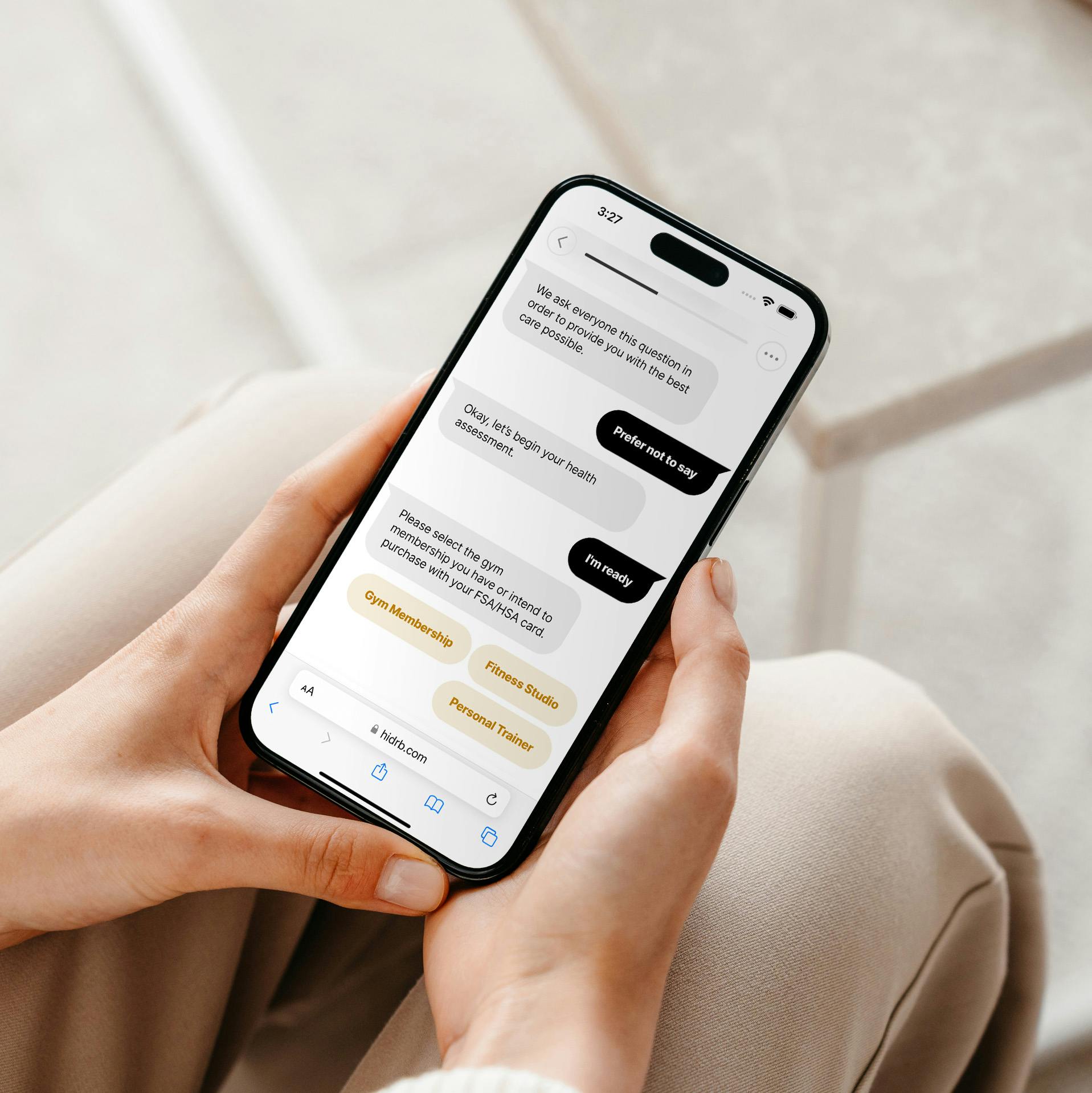Unlock your pre-tax HSA/FSA funds to save on rehabilitation therapies
$15 consult—no video required
Letters emailed within 1 day
Supports your treatment plan
Heal your body without injuring your wallet. With a convenient online consultation from Dr. B, qualifying patients can get a Letter of Medical Necessity online to save on rehabilitation therapies, including medical massage.

You earned it.

Pre-tax dollars
A Health Savings Account (HSA) or Flexible Spending Account (FSA) lets you bank your income before taxes—but options for spending can be limited.

Letter of Medical Necessity
Dr. B offers $15 online consultations that include a Letter of Medical Necessity, if appropriate.

Unlocked spending
With a Letter of Medical Necessity, pay for rehabilitation therapies with HSA or FSA funds.
Consultation

Dr. B Price
Dr. B offers online consultations for $15, which is less than most copays for a doctor’s visit—and the lowest price amongst telehealth companies.
No subscription required
See what others are saying about Dr. B

Here's what to expect
Tell us about your medical conditions and fitness goals with a $15 online consultation.
A medical provider will review your information and email you a Letter of Medical Necessity, if appropriate.
Submit your letter and receipts for related rehabilitation therapy services to your HSA/FSA administrator for reimbursement.
Lose weight with a weekly injection

Meet our advisors
“Our most valuable asset is our health. Whether you're a billionaire CEO or a single mom of multiple children—whatever your situation is—you can't do that without your health.”

Questions?
If you have a question we haven’t answered, send us a message. We’re happy to help.About Letters of Medical Necessity
What is a Letter of Medical Necessity?
A Letter of Medical Necessity is a document written by a licensed medical provider that details why a patient needs a specific medical product or treatment. It allows the patient to pay for the expense with funds from their pre-tax HSA (Health Savings Account) or FSA (Flexible Spending Account).
Not all healthcare costs can automatically be filed as HSA or FSA-eligible expenses. In those circumstances, a Letter of Medical Necessity provides the required proof that the particular expense is medically necessary and meets the criteria for FSA/HSA reimbursement under HSA or FSA guidelines.
Am I eligible for this?
You are eligible if:
- You have an active HSA or FSA account.
- You are preventing or reversing injuries or medical conditions like anxiety, pain, fibromyalgia, headache, myalgia, muscle spasms, stress, Parkinson’s disease, sleep disorders and others through rehabilitation therapy.
What is an HSA/FSA account?
Health Savings Accounts (HSA) and Flexible Spending Accounts (FSA) are tax-exempt accounts designated to reduce the cost of qualified medical expenses. Both are tax-advantaged savings accounts. You can most likely open an HSA if you have a high-deductible health care plan. FSAs can only be offered by employers as an additional health benefit plan.
The IRS determines the differences between HSA and FSA accounts, which are usually established and overseen by an HSA or FSA administrator. You can access that administrator via your employer’s HR department.
How does this work?
A Dr. B online medical consultation for a Letter of Medical Necessity involves a health assessment about your diagnosed condition and the rehabilitation therapy provider you plan to work with to improve or heal the condition. If eligible, you'll receive a Letter of Medical Necessity detailing how many treatments/sessions you can pay for with HSA or FSA funds and the period within which you must complete such sessions. (The letter comes a few hours after you’ve completed payment.)
If you have an HSA or FSA account, you can submit this letter and related rehabilitation therapy receipts to your HSA/FSA administrator to have the receipt amount reimbursed from your pre-tax HSA/FSA funds. To ensure compliance, keep your letter and applicable receipts available for the next three years.
How much will using my HSA/FSA card save me?
HSA and FSA accounts consist of pre-tax funds. This means you don’t pay income tax on money you put into those accounts and use to pay for qualified healthcare expenses.
This essentially increases your purchasing power for healthcare necessities. Individuals can contribute up to $4,150 ($8,300 for families) annually to their HSA, and up to $3,200 to their FSA. Most patients save between $1,000 and $2,000, depending on their state and tax bracket. (You can calculate your savings based on those parameters.)
How do you submit a Letter of Medical Necessity to your HSA/FSA administrator?
- Find your HSA/FSA provider: If you’re not sure who your HSA or FSA provider is, contact your employer's HR department. (If you have health insurance through the public marketplace, find your provider’s information through the financial institution that set up your HSA.)
- Access your HSA/FSA provider's web service: Set up a new account or use your login details to access the online platform of your HSA or FSA provider.
- Locate their 'Reimbursement' or 'Claims' section: Find the dedicated area on your HSA/FSA's website that handles reimbursements or claims.
- Submit your letter and receipts: Upload your Letter of Medical Necessity from Dr. B and the receipt for the product or service you bought as a result of your Dr. B health assessment. Purchases must be made on or after the date of your letter.
- Wait for your claim to be processed: Once you've submitted all required documents, it may take a few days or weeks for your HSA/FSA provider to review and process your claim. Once confirmed, they’ll deposit the reimbursement amount into the account you specified. If you run into any issues with your provider’s form submission requirements, request support from our team via your patient dashboard. We’ll help sort it out.
- Use your Letter of Medical Necessity for future claims: For rehabilitation therapies, you can resubmit the same letter with new receipts until you complete the number of sessions detailed on the letter within the timeframe specified.
How long does it take for HSA/FSA administrators to reimburse qualifying purchases?
HSA/FSA providers typically approve expenses 7-10 days after you submit your Letter of Medical Necessity and receipts. But reimbursement timelines can vary depending on your particular HSA/FSA administrator.
For how long is my letter valid?
Your Letter of Medical Necessity is valid for the number of sessions and time period your provider designates on your specific letter. You can file the same letter with any related purchase receipts made to their specifications. You can’t file it with purchases made before the letter was issued.
What is the process for declaring these purchases on my tax returns?
You don't need to submit any additional IRS tax forms for personal purchases made with FSA funds. (If you use your FSA to pay for the care of a dependent, you’ll have to file Form 2441.)
HSA tax benefits filing involves three IRS tax forms: 1099-SA, 5498-SA and 8889. Form 5498-SA is filed by the provider of your HSA account. During tax season, your provider will send you Form 1099-SA with information you’ll use to complete Form 8889, which you’ll need to submit with your annual tax filings. Make sure to keep copies of all documents you submit. Contact your HSA provider's customer service if you need assistance.


